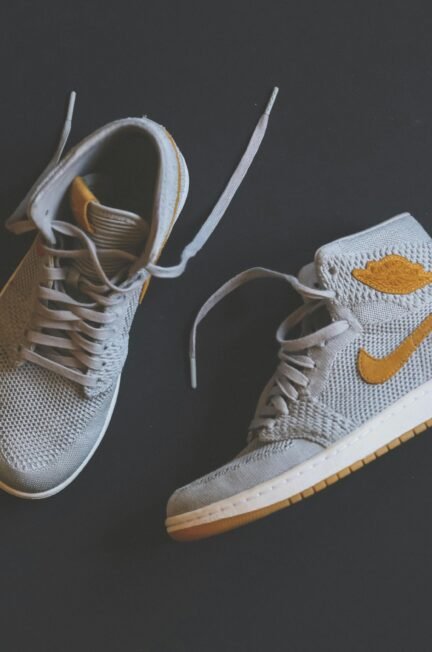Introduction
Streetwear has grown to become one of the biggest and most long-lasting trends in fashion, expanding from a niche subculture into a global movement. What started on the streets of New York and LA where skateboarding, hip-hop, and teen rebellion are all part of everyday life has translated from niche fad to global fashion trend which finds itself creeping onto high-fashion runways and into global wardrobes. Streetwear, much more than the stuff of garments, is a complete attitude of freedom and cultural change that comes from a society increasingly concerned with diverse socialites.

Streetwear has been embraced by a diverse demographic and this can be propagated by the comfort of casual style with attention to detail when it comes to design which fascinates peopleκ In this post you will learn about history of streetwear, the key components of streetwear fashion that made it so popular, the evolution of today’s current state in popularity and dominating trends.
The Roots of Streetwear Fashion
The origins of streetwear are obvious to trace from early and late 1980s in the USA mostly in the streets of Los Angeles and New York. It is a product of the skateboard culture on the West Coast, and an emerging hip-hop scene in the East Coast. Into a time when skateboarders and hip-hop artists didn’t just require practical, comfortable clothing but grams that spoke to their tribal affiliations and subversive spirit.
It was acclaimed that one of the first origins of streetwear was Shawn Stacy, who started clamoring surfboards and putting his famous logo on them and then ultimately started printing out shirts, hats, and other garments. Skaters and surfers, a group of urban youth was highly attracted by Stacy’s design believing that it represents the counter-sign streetwear.
By the 1980s, East Coast hip-hop artists including Run-DMC and LL Cool J had brought a greater wearable street influence to the mainstream by wearing trackless, baseball caps, leather bomber jackets and trainers from Adidas. The marriage of sportswear, music and urban culture set the stage for what was to become a global fashion movement.
A History of Streetwear and Its Global Influence
As streetwear hit the mainstream, it crossed above and beyond borders to establish in other fashion landscapes globally. With the influx of Hip Hop culture in the 90s and early 2000s, streetwear began to penetrate a greater audience; brand such as Supreme, A Bathing Ape (BAPE), Off White dominated the industry.
High fashion brands started taking inspiration from streetwear and other underground culture. For example, we saw luxury-designed streetwear collections like Virgil Ablow’s (founding Off-White), or Riccardo Tisci (currently in Burberry) putting some high-fashion-elements into their work. A 2017 collaboration between Louis Vuitton and Supreme became a watershed moment in streetwear going mainstream, cementing its place not just as a subcultural movement but as a hot bed of innovation in the high-fashion space.
It was uncharted territory; a square circle of luxury and streetwear that bore new possibilities only to have officially birthed high-end streetwear brands in partnership with major fashion houses. Streetwear became collectable, and limited-edition drops created a buzz around the once humdrum clothes, turning them into highly sought-after ‘grail’ items.
Essential Components of Streetwear Fashion
Additionally, there are a few major components to streetwear fashion that help make it identifiable on the spot. These include:
Relaxed Silhouettes
Comfort & Mobility are paramount When it comes to streetwear, we immediately think of that hazy blur between sloppy clothing and incoherent style. Your average streetwear wardrobe is full of hoodies, sweatshirts, joggers and oversized T-shirts (we could go on). This emphasis on convenience is one of the greatest reasons for its broad popularity, largely with younger demographics.
Bold Logos and Graphics
Bold logos, graphic prints and loud designs have been a characteristic of streetwear The boxy logo of Supreme, for example, or the camo patterns of BAPE: streetwear has always been about bold visuals that stand out and make a statement. These graphics often express both identity and belonging to a subculture in question.
Sneaker Culture
The most important piece of a streetwear outfit is what’s on your feet — sneakers. Originally rooted in athletic performance and skateboarding, footwear has grown into a status symbol with certain sneakers released in limited quantities becoming sought after collectors’ items. In one example, some sneaker releases from brands such as Nike, Adidas, and Puma have led to them partnering with streetwear labels artists to produce limited-run sneaker designs which sell out in minutes.
Mixing High and Low Fashion
Streetwear has never really been a stickler for the rules of fashion, especially when it comes to wearing high and low fashion together. Streetwear enthusiasts are known to wear a luxury designer jacket with basics from affordable brands or even dress trousers with sneakers. Removing the exclusivity of luxury fashion and embedding it with everyday practicality has kept streetwear fresh throughout its entire existence.
Cultural Influence
Since the beginning of streetwear, it has been closely tied to music, art and youth culture. It comes from a time crunch, deriving from several other cultural movements like the punk rock aesthetic, hip hop music or skateboarding. Streetwear fashion has become synonymous with the ideals and spirit of each young generation that wears it, which can be seen as a form of social commentary.
Streetwear Trends in 2024
As streetwear continues to develop even in 2024, here are the key trends that are defining the direction of the movement:
Sustainable, Ethical manufacturing
With a growing climate conscious consumer, many streetwear brands are now looking into much cleaner ways to produce garments. From using eco-friendly materials to producing them in a way that reduces waste and ensures ethical manufacturing practices. Slow Fashion and Sustainability in Street wear Notable brands such as Noah, Patagonia, and Parley for the Oceans built their businesses upon creating sustainable apparel.
Gender Fluidity in Fashion
Streetwear has been one of the first to break boundaries, and an indicator says that gender-neutral fashion is one of the key trends in 2024. With a trend of androgynous fashion beginning to take the backseat, many brands are veering away from sticking to true gendered clothing lines as they release their unisex collections that cater to both male and female customers. A phenomenon representing the contemporary turn, not just in society, but as well as population towards accepting and breaking the traditionalism of genders.
Old School & Vintage Streetwear
In streetwear fashion, nostalgia is a big player and many of the brands have been borrowing ideas from the 90s and early 2000s. When it comes to logos, colors, and design in general, vintage is doing a comeback because quite simply the people from the older generations who use to live these days are drawn to that aesthetic meanwhile the younger people just love them.
Brand , Artist Collaborations
Collaborations have been a constant theme in streetwear and that does not seem to be changing any time soon on up to 2024. Whether in the form of collaborations with luxury fashion houses, musicians, visual artists or even sports teams in the case of football (soccer) shirts from adidas and PUMA to name only two, these limited-edition collections are hyped as anything and ensure that streetwear remains at the bleeding edge of the fashion landscape.
Streetwear and its Cultural Influence
Streetwear Is More Than Just A Fad, Its A Cultural Movement Suitable To Anyone From The Four Corners Of The Earth. She called it a self-expression platform that helps people express who they are, what they believe in and their values through the way we dress. Streetwear is politics on a shirt, it’s the bridge between humans worldwide that can help foster better interactions with each other.
Music, in particular hip-hop, remains one of streetwear’s driving forces. Musicians and rappers have been synonymous with streetwear culture forever, wearing the best items they could get their hands on. Icons such as Kanye West, Pharrell Williams, and Travis Scott have adopted streetwear not only reflected in their personal style but also in the lines they create that accentuate this convergence between the worlds of fashion and music.
Conclusion
It started out as a rebellious, underground movement, but this season streetwear graduated to take its place in the pantheon of major fashion forces. The ability to create garments which seamlessly combines comfort, individuality and design boldness has established them at the forefront of modern fashion landscape, thus becoming one of the most influential movements in this 21st century. Streetwear, as it continues to evolve, is an ongoing testament to the cultural trends and societal values of today and tomorrow that we so love.
By 2024, streetwear is no longer just a style it’s a message. Then words, screen printed across clothing by people who love to wear what they believe in another of those most powerful aspect for me in fashion as expression itself. No matter if you are an old fan or a newcomer, the impact of streetwear is not going away anywhere and will remain in fashion for long.



